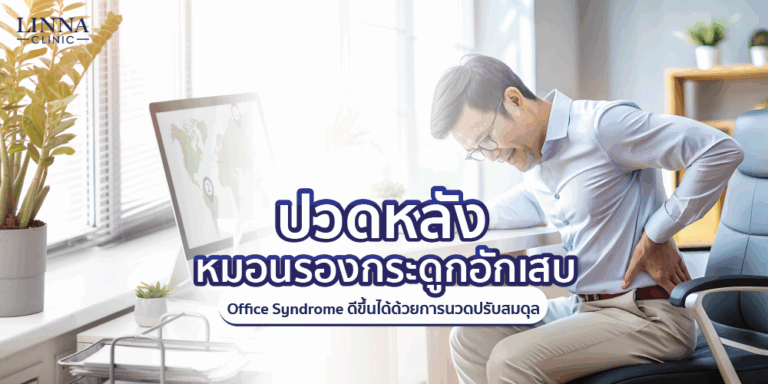Back pain, neck stiffness, and tightness in the shoulders are among the most common symptoms of Office Syndrome, frequently found in working-age individuals. While many may dismiss them as simple fatigue or muscle strain, if left untreated, these symptoms can progress into more serious conditions such as herniated discs or spinal misalignment that compresses nerves often without obvious warning signs. Today, there are several ways to address Office Syndrome, including medication, physical therapy, and Holistic Massage a health restoration approach that rebalances the body from within. This method helps realign bones, muscles, and tendons into their proper positions, promoting structural balance without the need for surgery, and reducing unnecessary dependence on medication. It is a safe and effective way to improve quality of life for those experiencing these conditions.
Table of Contents
Underlying Causes of Musculoskeletal Pain in Office Syndrome
Office Syndrome is a condition characterized by a group of symptoms involving pain in the muscles, fascia (connective tissues), and spine. It is commonly caused by sitting in improper posture for extended periods—weeks, months, or even years. This leads to muscle strain and tension in areas such as the neck, shoulders, back, arms, and legs, often accompanied by numbness or tingling sensations in various parts of the body.
It is frequently found among office workers or individuals who maintain the same posture for long periods. The most common contributing factors include:
- Improper sitting posture such as slouching, raising the shoulders, or crossing the legs places excessive strain on the neck, upper back, and lower back muscles. Over time, this can lead to stiffness, chronic pain, and even inflammation of spinal discs.
- Lack of movement or posture changes Sitting for prolonged periods without moving the body leads to repetitive muscle strain, reduced blood circulation, and nerve compression, which may cause numbness, pain, or radiating discomfort.
- Non-ergonomic furniture such as desks that are too high, chairs without back support, or monitors that are not at eye level can force the body into unnatural positions, resulting in chronic muscle tension and persistent aches.
- Chronic stress and lack of rest High workloads and insufficient sleep can cause involuntary muscle tension, especially in the neck, shoulders, and back, leading to fatigue and generalized body pain.
Consequences of Office Syndrome: Back Pain and Herniated Discs

Although early symptoms of Office Syndrome may seem mild, neglecting to adjust work habits can lead to chronic and progressive conditions such as:
- Chronic back pain that may radiate to the arms or legs, especially when spinal discs press on nerves. This can interfere with daily activities, making it difficult to stand, sit, or walk.
- Persistent stiffness in the shoulder blades, frozen shoulder, or deep muscle tightness around the scapula.
- Numbness in the fingers, chronic trigger finger, and in some cases, muscle weakness.
- Chronic headaches or migraines resulting from tightness in the neck, shoulders, and upper back muscles.
- Spinal misalignment or postural imbalances such as uneven shoulders or tilted hips, which can affect overall health and increase the risk of future injuries.
- Dysfunction in various body systems, including the autonomic nervous system, circulatory system, blood pressure regulation, digestive system, and musculoskeletal system.
- Sleep disturbances, such as frequent waking during the night due to body aches or numbness while sleeping.
- Mood swings, poor concentration, and reduced work performance due to physical discomfort and chronic fatigue.
What is Holistic Massage? How is it different from regular massage?
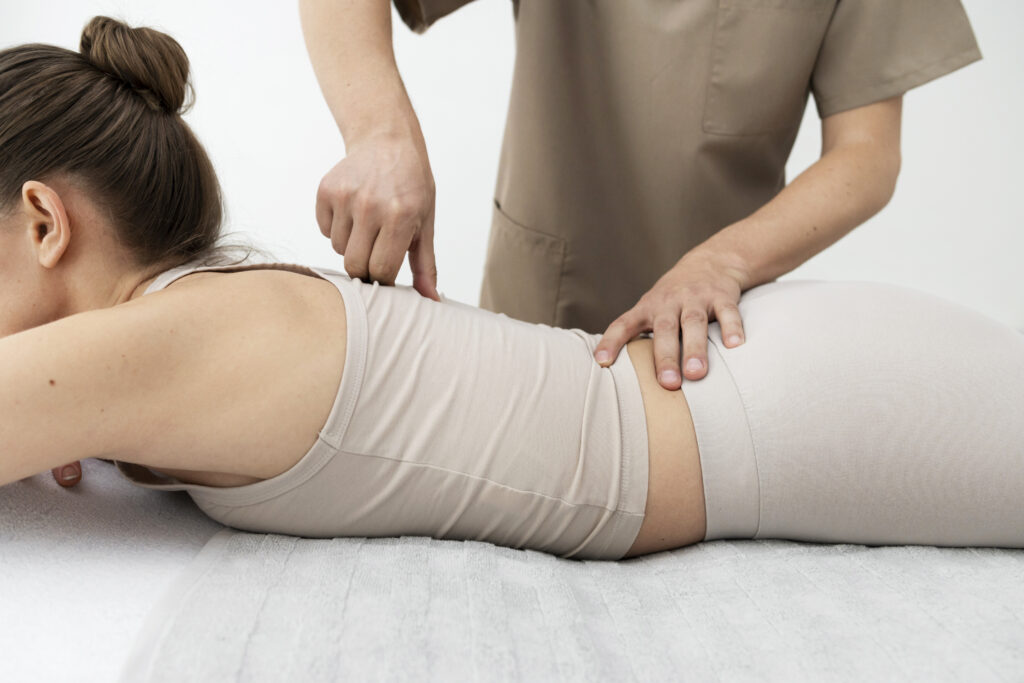
Holistic Massage is a therapeutic practice that evolves from traditional Thai massage, officially recognized by Thailand’s Department of Thai Traditional and Alternative Medicine. Unlike general massage techniques that focus primarily on muscle relaxation, Holistic Massage aims to restore structural balance and harmony within the body as a whole.
Practitioners use a combination of visual observation, touch, and listening skills to assess the patient’s physical condition including body temperature, blood circulation, muscular system, skeletal alignment, and overall posture. The treatment then proceeds through a careful process using fingers, hands, feet, knees, and elbows to apply pressure in a way that avoids excessive compression or strain.
The approach is designed to systematically realign and balance the body across multiple layers skin, muscles, tendons, and bones to return the body to its natural equilibrium and stimulate its self-healing mechanisms. This technique effectively helps relieve and prevent various conditions such as back pain, shoulder tension, knee pain, office syndrome, and repetitive strain injuries without surgery or unnecessary medication.
What are the benefits of Holistic Massage?
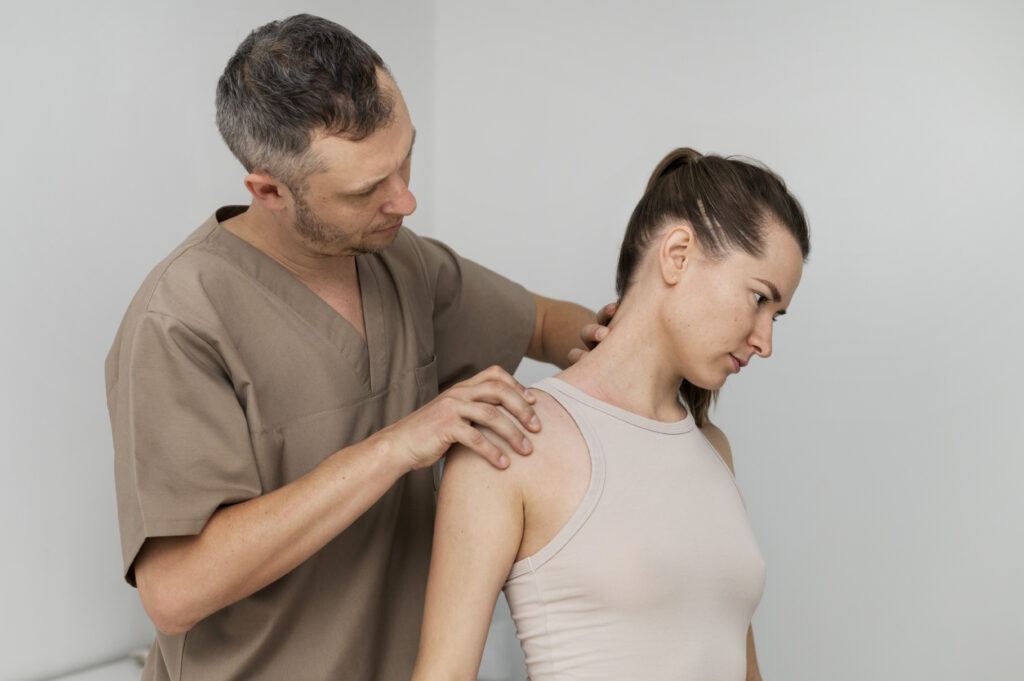
- Relieves chronic muscle pain, including stiffness in the neck, shoulders, back, and shoulder blades
- Realigns bones and joints, reducing nerve compression and preventing misalignments such as slouched posture, uneven shoulders, bowlegs, or curved arms
- Stimulates blood and lymphatic circulation, improving detoxification and nutrient delivery
- Restores nervous system function, reducing numbness or muscle weakness
- Prevents migraines and tension headaches caused by tight neck and shoulder muscles
- Eases muscle cramps, trigger points, and chronic locking, such as frozen fingers or muscle knots
- Balances blood pressure, helping reduce the risk of heart enlargement or artery blockage
- Improves posture and physical appearance by structurally aligning the body toward a more balanced state
Who Is Holistic Structural Massage Suitable For?
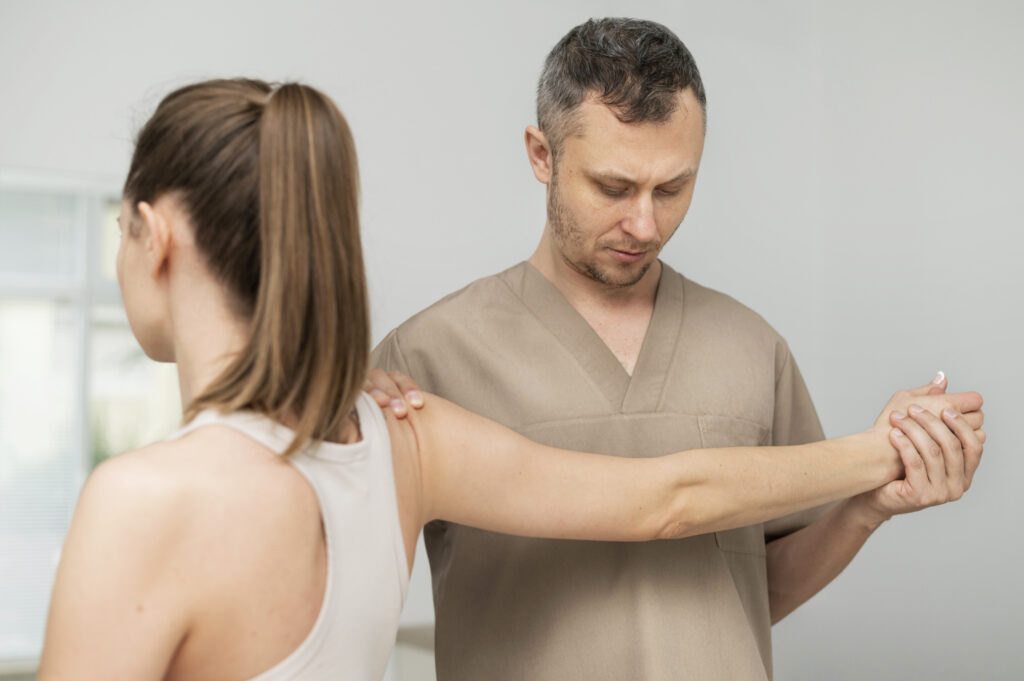
A typical Holistic Massage session lasts around 45 to 60 minutes and can be performed every 1–2 weeks, depending on individual needs and professional recommendations. This therapy is suitable for individuals who wish to restore their health or alleviate various conditions, including:
- Individuals with Office Syndrome who experience neck, shoulder, back, or scapular pain due to prolonged sitting or repetitive muscle use
- People suffering from chronic pain caused by herniated discs or spinal misalignment
- Those with frequent muscle cramps or muscle tightness
- Individuals with imbalanced posture, such as uneven shoulders, tilted hips, or a sense of instability while walking
- People who want to restore structural balance, improve circulation and lymphatic flow, and regulate blood pressure to healthier levels
- Those aiming to improve their posture, preventing slouched shoulders, hunchback, or postural imbalances
- Individuals at risk or those who wish to proactively care for their health, especially to prevent conditions such as migraines, partial paralysis, numbness in hands and feet, trigger finger, knee pain, or heart disease
Precautions for Holistic Structural Massage
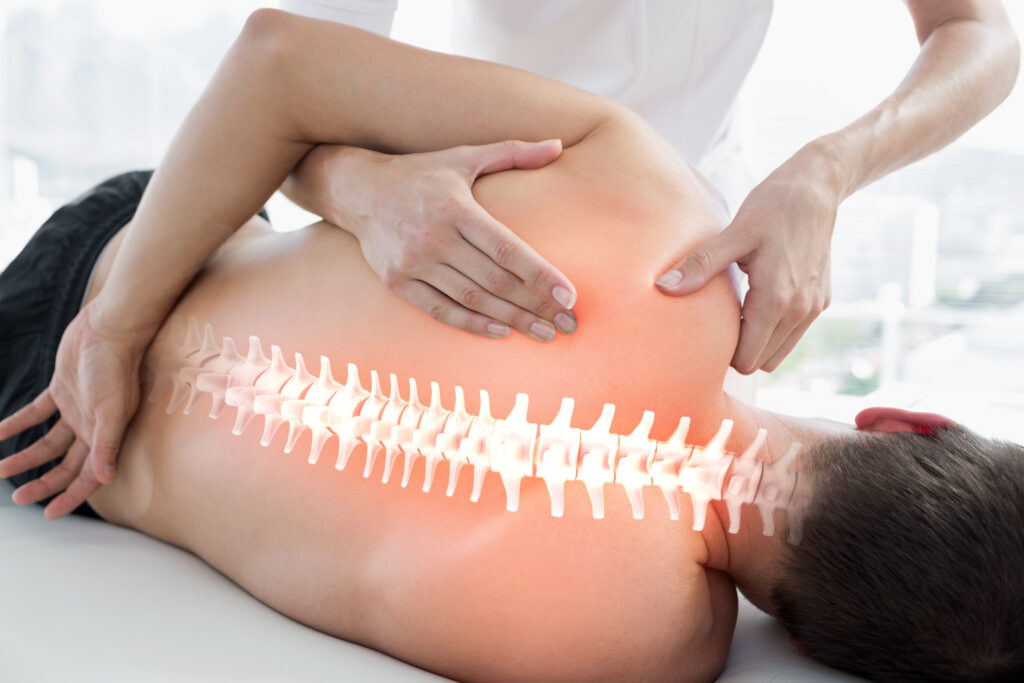
While Holistic Massage offers therapeutic and restorative benefits, certain groups of individuals should take caution or avoid the treatment in specific situations, as follows:
- Avoid massage if you have a high fever or are currently menstruating.
- Do not receive massage on areas that are bruised, inflamed, or recently injured.
- Those with severe osteoporosis, metal implants, skin diseases, or certain infectious conditions should avoid this therapy.
- A professional assessment should always be performed before beginning any treatment session.
To ensure safety and effectiveness, Holistic Massage should be performed only in certified clinics by experienced therapists who have undergone specialized training in anatomy, musculoskeletal structures, and the nervous system. This minimizes the risk of adverse effects from incorrect techniques, improper pressure, or stimulation of the wrong areas.
At LINNA Clinic, treatment is provided by a chronic pain specialist with over 15 years of experience, using Holistic Massage and Myofascial Release Therapy (Non-Surgical Technique) Our practitioner has completed over 800 hours of certified training in Thai Traditional Medical Massage and adheres to medical standards in personalized, non-invasive rehabilitation — aiming to enhance each client’s quality of life without surgery or unnecessary medication.
Conclusion:
Pain and discomfort from Office Syndrome are not just signs of fatigue — they indicate an imbalance in body structure and internal systems that should be addressed seriously. Holistic Massage is an excellent option for those seeking to restore their body’s natural balance and regain mobility and comfort without invasive procedures.
If you’re suffering from chronic body pain, Office Syndrome, back pain, or herniated disc issues, and are looking for a safe, targeted treatment, we welcome you to consult our specialist at LINNA Clinic. With over 15 years of patient care and 800+ hours of professional Thai massage training, we are here to support your journey toward recovery. Whatsapp +66 919799554 , Call us at 063-609-8888 or Add us on LINE: @linnaclinic to book your consultation today.

